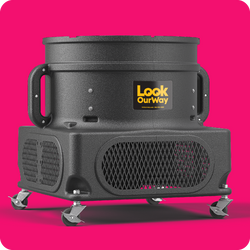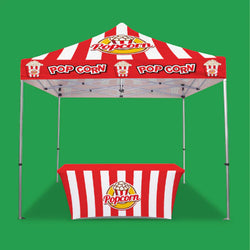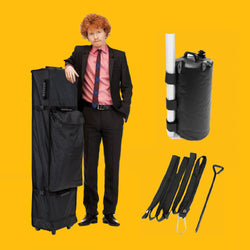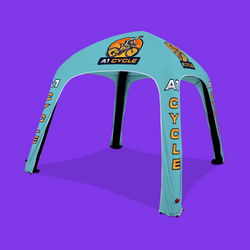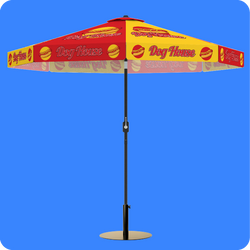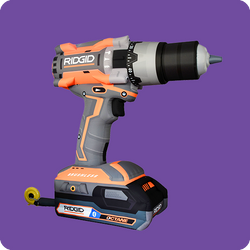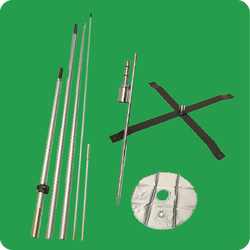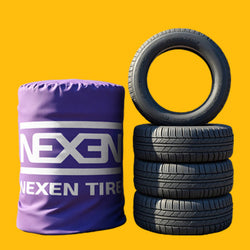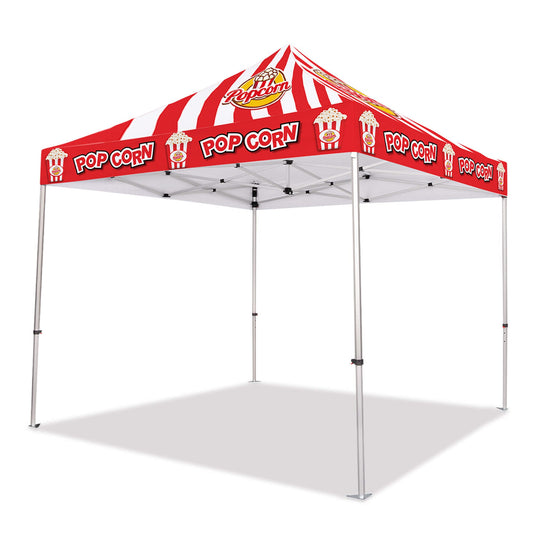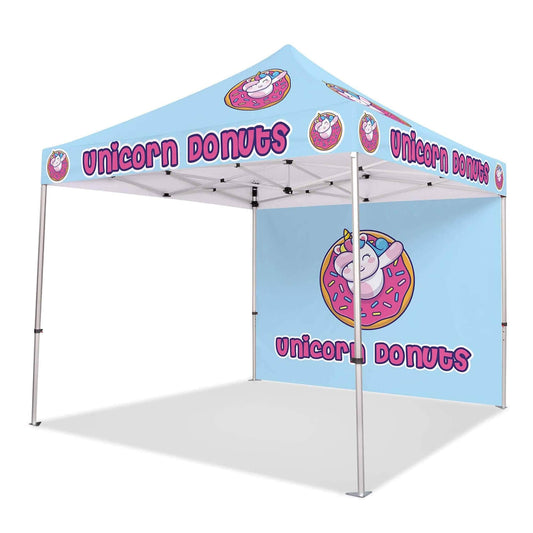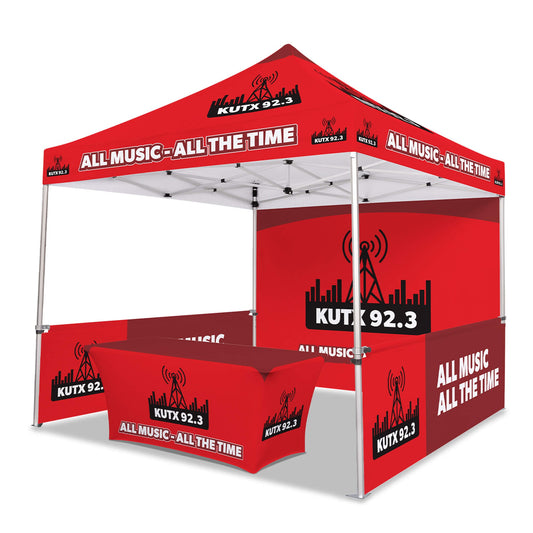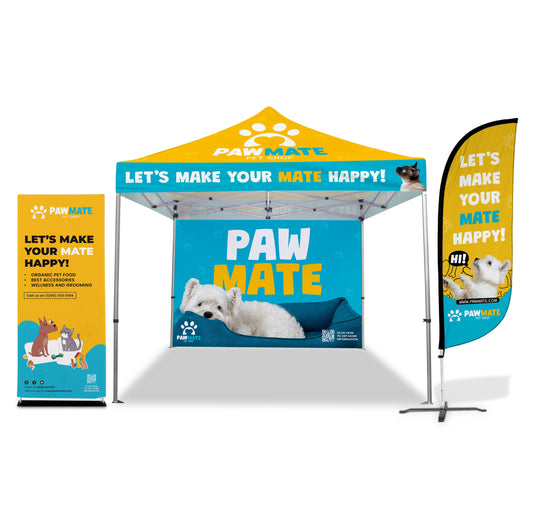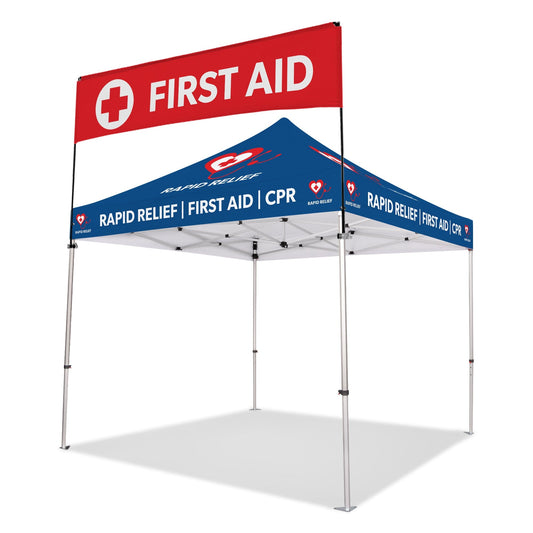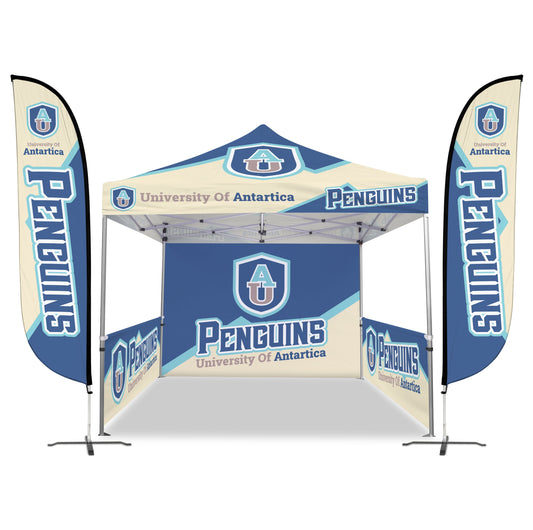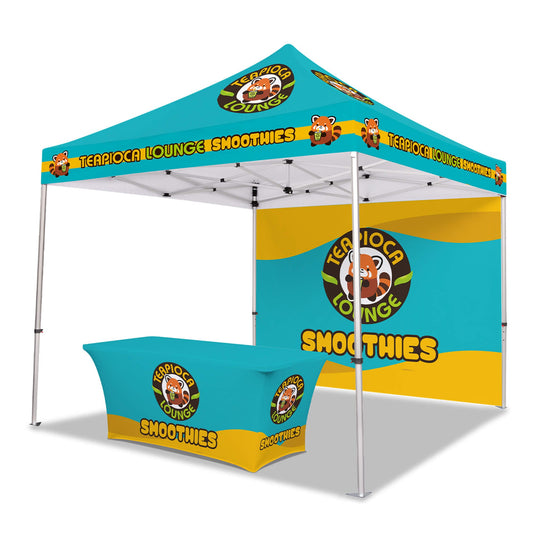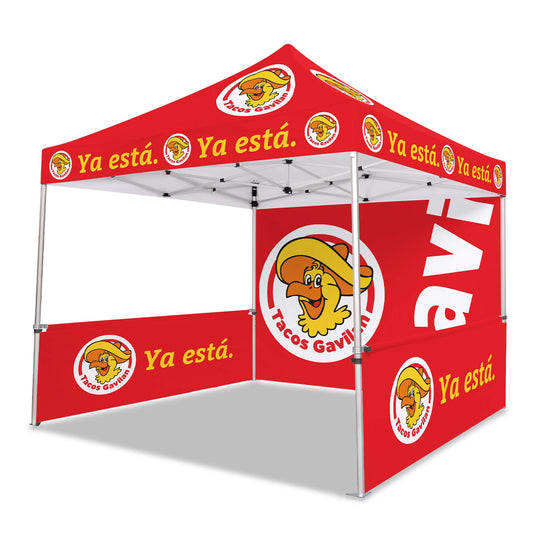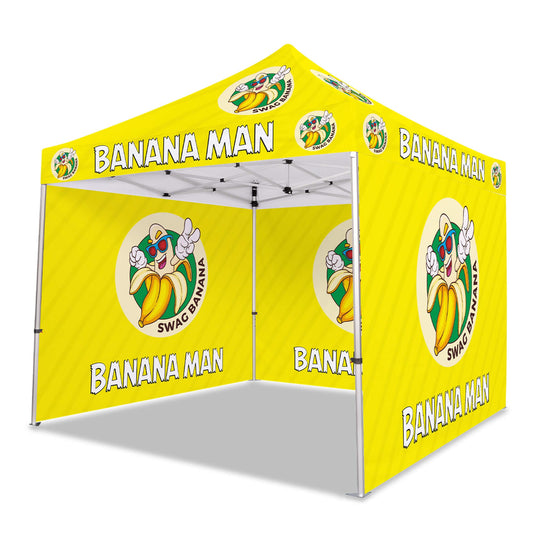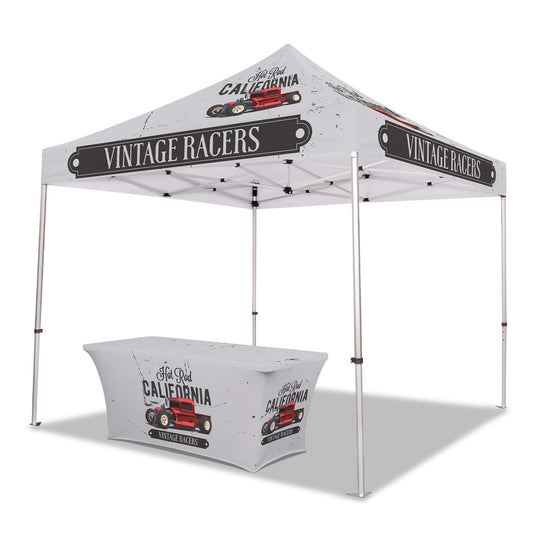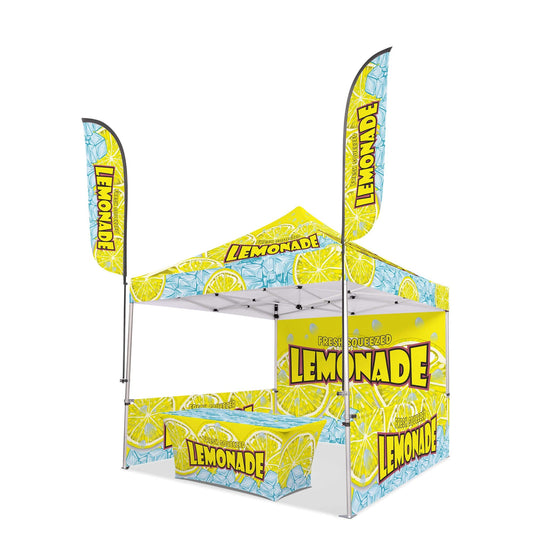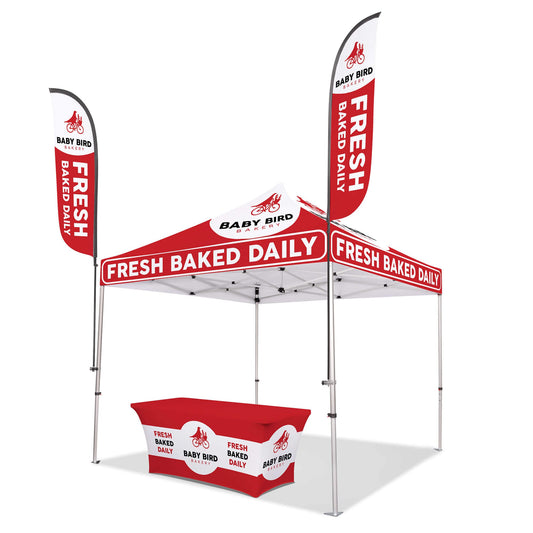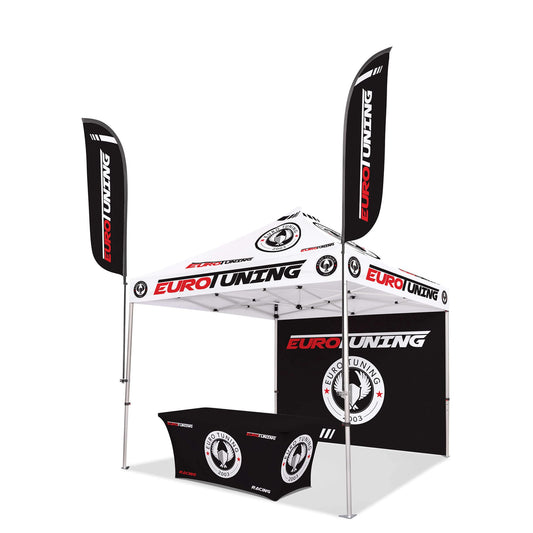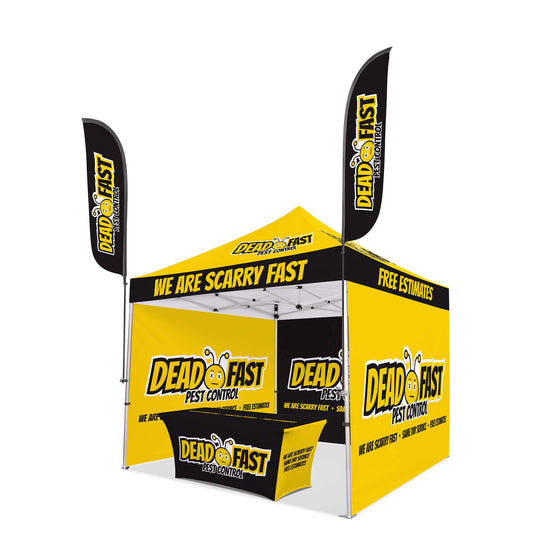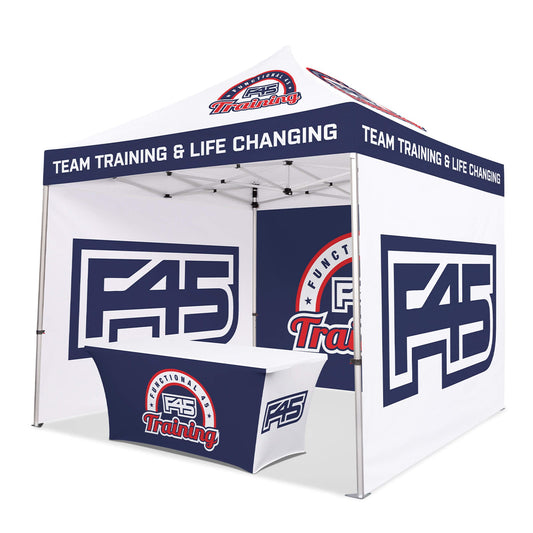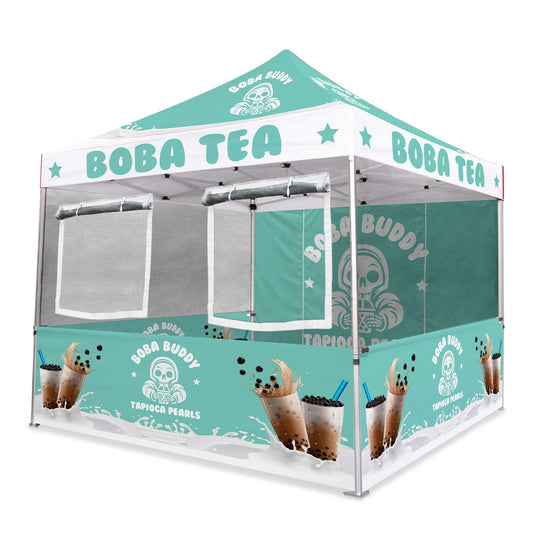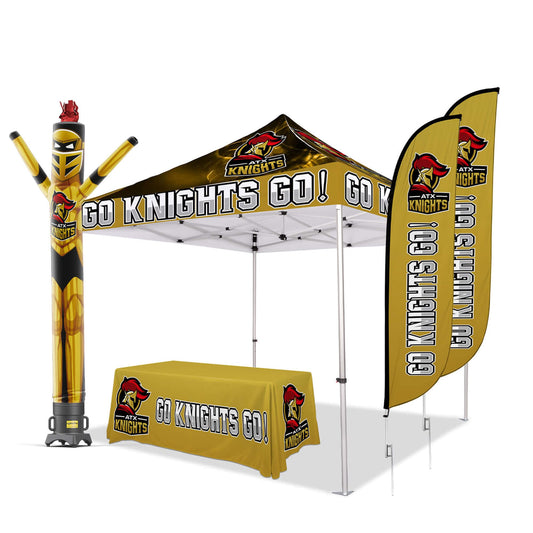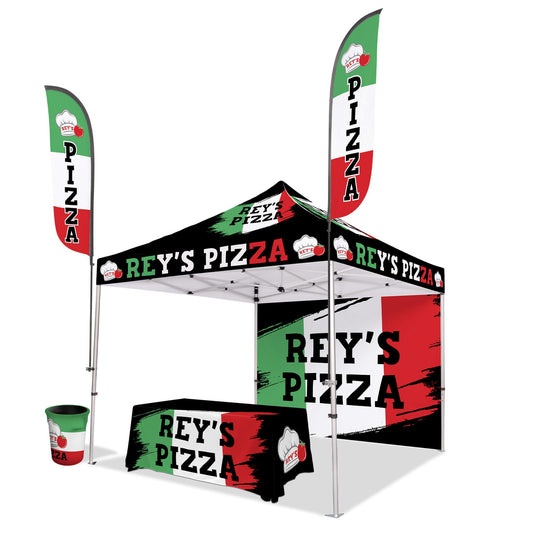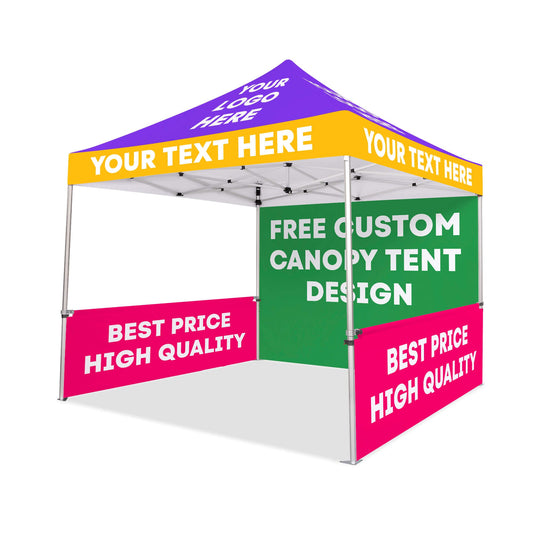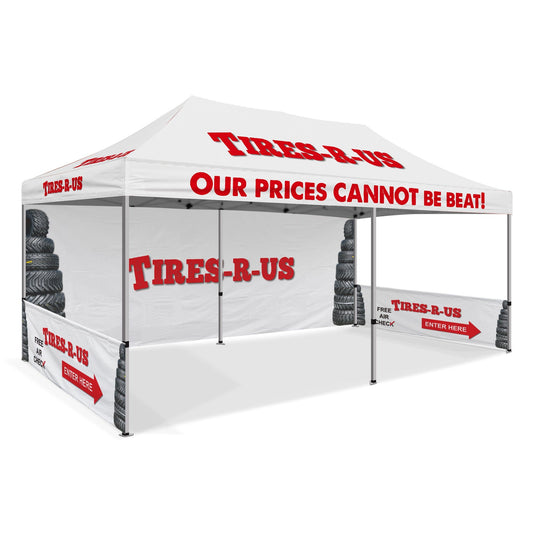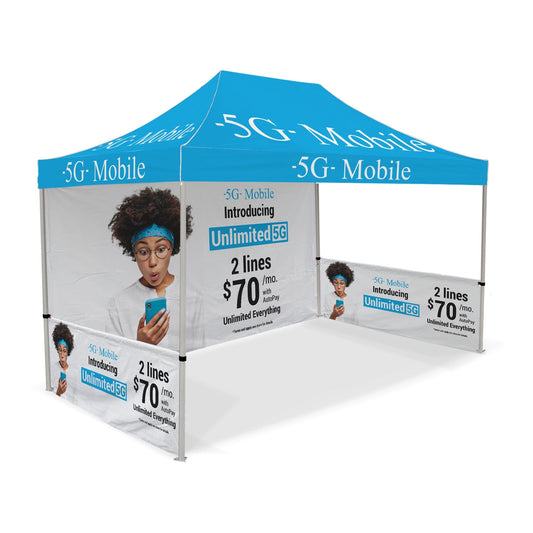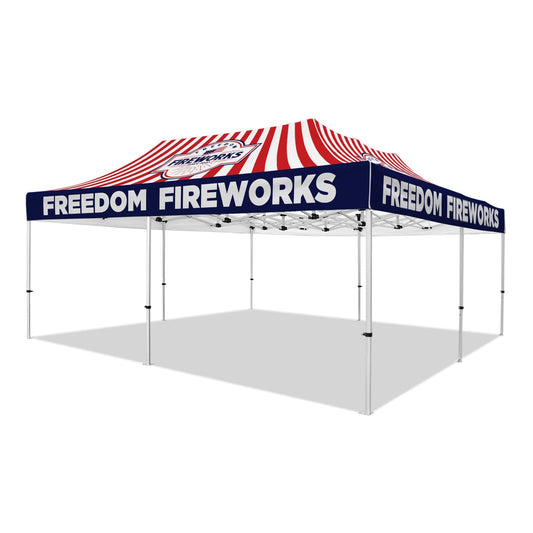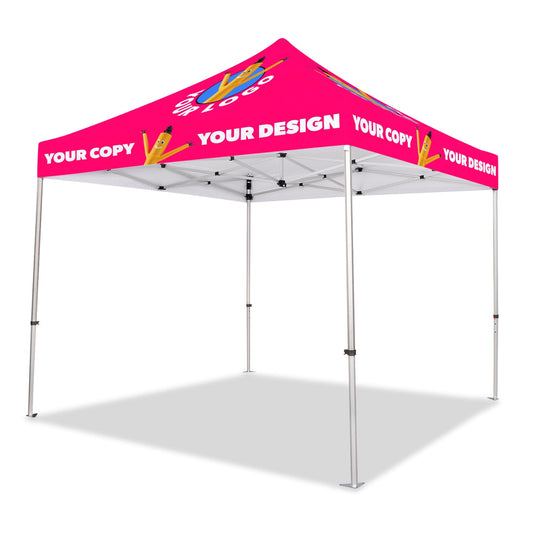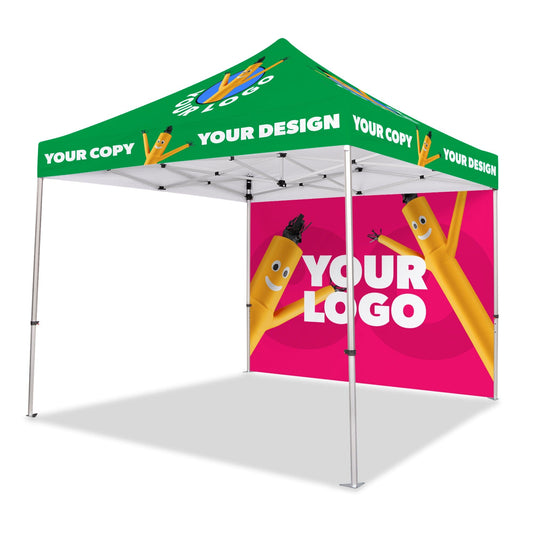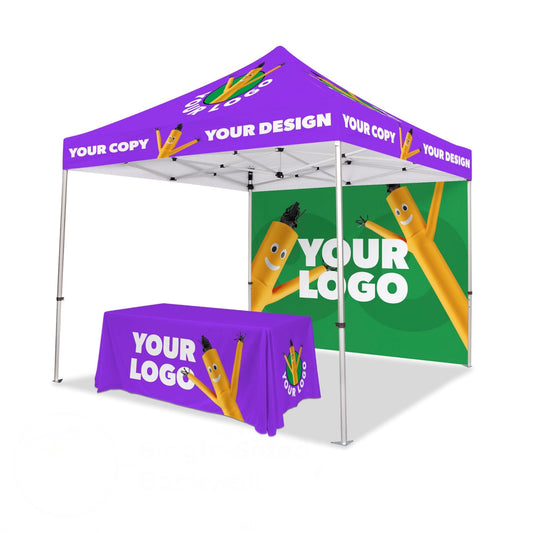NEED IT FAST? We offer 3 day Rush Production on custom canopy tents. 🚚💨
Custom Canopy Tents – Elevate Your Brand with Style
LookOurWay, your premier destination for custom canopy tents that blend functionality with branding brilliance. Whether you're hosting a trade show, outdoor event, or promotional gathering, our custom canopy tents are designed to enhance your presence and make a lasting impression.
Canopy tents are not only mobile shelters but have now become a fully customizable advertising solution. With the ability to have your company or brand’s logo and messaging printed onto all surfaces of the tent package you choose, as well as a host of additional complimentary custom products like table covers and feather flags, you will have the ability to shelter your team and boldly display your branding and messaging in a clean and professional manner. Select the package of your choice above to get started.
Why Choose Our Custom Canopy Tents?
- Tailored to Your Needs: Our custom canopy tents are fully customizable to reflect your brand’s identity. Choose from a variety of sizes, colors, and custom design to create a tent that stands out from the crowd.
- High-Quality Materials: Constructed with durable, weather-resistant fabrics and sturdy frames, our tents are built to withstand the elements while keeping your brand visible and vibrant.
- Easy Setup & Transport: Designed for convenience, our canopy tents are easy to set up and take down. With lightweight materials and a practical design, they’re perfect for any event location.
- Enhance Your Visibility: Our custom printing options allow you to showcase your logo, graphics, and messaging in full color, ensuring your brand gets noticed from every angle.
- Versatile Applications: Ideal for trade shows, festivals, farmers' markets, and corporate events, our canopy tents provide ample space and protection, making them a versatile choice for any occasion.
Get Started Today!
Transform your next event with a custom pop up tent that represents your brand and captures attention.
Explore our tent packages and submit a free design request to preview how your branded canopy tent will look today!
Frequently Asked Questions
The price of a 10-foot custom canopy can vary widely depending on a number of factors, including the materials used, the complexity of the design, the printing process, and the manufacturer or supplier.
Generally, a basic 10-foot custom canopy can cost anywhere from around $200 to $500 or more, while a more elaborate and high-quality custom canopy with features such as high-grade materials or add on accessories can cost upwards of $1,000 or more.
It's important to research different manufacturers and suppliers, and compare pricing and features before making a purchase to ensure that you get the best value for your budget. Additionally, some manufacturers and suppliers may offer bulk discounts or other promotional pricing, so it's always a good idea to ask about these options as well.
The sturdiness of a custom pop-up canopy can depend on a number of factors, including the materials used, the design, and the construction quality.
Here are some features to look for when searching for a sturdy custom pop-up canopy:
Frame Material: Look for a custom pop-up canopy with a sturdy frame made from high-grade materials such as aluminum or steel. Aluminum is lightweight, rust-resistant, and durable, while steel is heavier but very strong and durable.
Canopy Material: The canopy material should also be durable and able to withstand various weather conditions. High-quality materials such as polyester or vinyl-coated polyester are often used for custom pop-up canopies.
Reinforced Corners: The corners of the canopy should be reinforced to provide extra support and stability. Look for a custom pop-up canopy with reinforced corners and seams that are sewn with heavy-duty thread.
Weighted Feet or Anchors: Some custom pop-up canopies come with weighted feet or anchors that help keep the canopy stable in windy conditions.
Truss Bars: Look for a custom pop-up canopy with truss bars, which are the horizontal bars that connect the legs of the frame. Truss bars provide additional support and stability to the canopy.
Warranty: Finally, check for a manufacturer or supplier that offers a warranty on their custom pop-up canopies. A good warranty can give you peace of mind knowing that you are investing in a quality and durable product.
It's important to research different manufacturers and suppliers, and compare the features and construction quality before making a purchase to ensure that you get a sturdy custom pop-up canopy that meets your needs and budget."
The color of a canopy can affect how much heat it absorbs, which in turn can affect how cool it keeps you. In general, lighter colors tend to reflect more sunlight and heat, and therefore can help keep you cooler than darker colors.
Here are some colors that can help keep you cooler under a canopy:
White: White is the most reflective color and can reflect up to 85% of the sunlight that hits it, making it a good choice for keeping cool.
Light Grey: Light grey is another highly reflective color that can help keep you cool by reflecting sunlight.
Beige or Tan: Beige or tan colors can also help keep you cool by reflecting sunlight, although not quite as much as white or light grey.
Light Blue: Light blue is a color that can help keep you cool by reflecting some sunlight, although it's not quite as effective as white, light grey, or beige.
It's important to note that the material and design of the canopy can also affect how much heat it absorbs and how cool it keeps you. Look for canopies made from breathable materials, and with designs that provide good ventilation and airflow to help keep you comfortable.
The life expectancy of a canopy can vary depending on a number of factors, including the quality of the materials used, the frequency of use, and the conditions in which it is used and stored. In general, a well-maintained and high-quality canopy can last anywhere from 3 to 10 years or more.
Here are some factors that can affect the life expectancy of a canopy:
Material Quality: The quality of the materials used in the canopy can greatly affect its lifespan. Look for canopies made from high-quality materials such as heavy-duty polyester or vinyl-coated polyester, which are durable and can withstand various weather conditions.
Frequency of Use: The more frequently a canopy is used, the more wear and tear it will experience, which can shorten its lifespan. Canopies that are used occasionally and stored properly will generally last longer than those that are used frequently.
Weather Conditions: Exposure to harsh weather conditions such as high winds, heavy rain, and extreme heat or cold can also affect the lifespan of a canopy. Look for canopies that are designed to withstand the weather conditions in your area.
Maintenance: Proper maintenance can help extend the lifespan of a canopy. Regular cleaning, storage in a dry and cool place, and repairs as needed can help prevent damage and prolong the life of the canopy.
It's important to carefully research different canopy options, and choose one that is designed for your specific needs and intended use, in order to get the longest possible lifespan from your canopy.
Whether or not you can leave a canopy out in the winter depends on the specific type of canopy and the weather conditions in your area. In general, most canopies are not designed to withstand heavy snow loads or strong winds, and it is not recommended to leave them out in extreme winter weather.
Here are some factors to consider when deciding whether or not to leave your canopy out in the winter:
Canopy Material: The material of the canopy can affect its ability to withstand winter weather conditions. Canopies made from heavy-duty materials such as vinyl-coated polyester or PVC are generally more durable and can withstand winter weather better than lighter weight canopies made from materials such as nylon or polyester.
Snow Load: The amount of snowfall in your area and the weight of the snow can also affect the ability of the canopy to withstand winter weather. Canopies should be cleared of snow as soon as possible, as the weight of accumulated snow can cause the canopy to collapse.
Wind: Strong winds can also damage or even destroy a canopy. If you live in an area with high winds, it's generally not recommended to leave your canopy out in the winter.
Storage: If possible, it's generally recommended to store your canopy indoors during the winter months. If you don't have indoor storage available, the canopy should be stored in a dry and protected area and secured to prevent it from blowing away.
In summary, whether or not you can leave your canopy out in the winter depends on the specific type of canopy and the weather conditions in your area. It's important to carefully consider the above factors and follow the manufacturer's recommendations for winter use and storage to ensure the longevity of your canopy.
Leaving a canopy up all summer is generally possible, but it depends on a number of factors including the quality of the canopy, the weather conditions in your area, and how the canopy is secured. Here are some things to consider:
Canopy Quality: The quality of the canopy is an important factor to consider. Higher quality canopies made from materials like vinyl-coated polyester or PVC are generally more durable and better able to withstand prolonged exposure to the sun and other weather conditions.
Weather Conditions: The weather conditions in your area can also affect the longevity of a canopy. If you live in an area with frequent rain, high winds, or intense sun, the canopy may be more prone to damage or wear and tear.
Proper Securing: Canopies should always be properly secured to prevent damage or injury caused by wind or other weather events. Staking or weighing down the canopy, and using guy ropes or other supports can help keep it in place and prevent it from collapsing.
Maintenance: Proper maintenance, including regular cleaning and inspections for damage, can help extend the life of a canopy.
In general, leaving a canopy up all summer is possible as long as it is of good quality and properly secured. However, it's important to monitor the canopy for signs of wear and tear, and to take it down or secure it during periods of extreme weather.
Here are some tips on how to keep a canopy from blowing away in the wind:
Secure the Canopy to Weights: Use weights to anchor the canopy down. Fill sandbags or plastic containers with sand, gravel, or water and attach them to each canopy leg. Some canopies come with built-in pockets to hold weights.
Use Stakes or Pegs: Use stakes or pegs to anchor the canopy to the ground. The stakes should be at a 45-degree angle and driven into the ground as far as possible.
Use Guy Ropes or Straps: Guy ropes or straps can be attached to the canopy and anchored to the ground or nearby objects. They should be pulled taut to prevent the canopy from moving in the wind.
Consider a Pop-Up Canopy with Adjustable Legs: Some pop-up canopies come with adjustable legs that can be raised or lowered. If the wind picks up, lowering the legs will give the canopy more stability.
Take Down the Canopy in High Winds: If winds are too strong, take down the canopy. It's better to take the canopy down and store it than to risk damage or injury.
It's important to always properly secure your canopy to prevent it from blowing away in the wind. Follow the manufacturer's instructions and take precautions such as using weights, stakes, or guy ropes to ensure the canopy stays in place.
Here are some tips on how to keep your canopy from ripping:
Choose a Quality Canopy: Invest in a high-quality canopy made from durable materials such as vinyl-coated polyester or PVC. These materials are more resistant to ripping than cheaper alternatives.
Use a Canopy Cover: A canopy cover can protect the canopy from damage caused by the sun, wind, and rain.
Avoid Overstretching: Overstretching the canopy can put undue stress on the material, making it more prone to ripping. Follow the manufacturer's instructions on how to set up the canopy and avoid stretching it beyond its recommended limits.
Proper Maintenance: Regular cleaning and maintenance can help prevent rips and tears. Clean the canopy with mild soap and water, and inspect it regularly for signs of wear and tear. Repair any small rips or tears as soon as possible to prevent them from getting worse.
Proper Storage: When not in use, store the canopy in a cool, dry place away from direct sunlight. Avoid folding or storing the canopy when it is wet, as this can lead to mildew and mold growth which can weaken the material and cause it to rip.
By following these tips, you can help prevent your canopy from ripping and prolong its lifespan.




